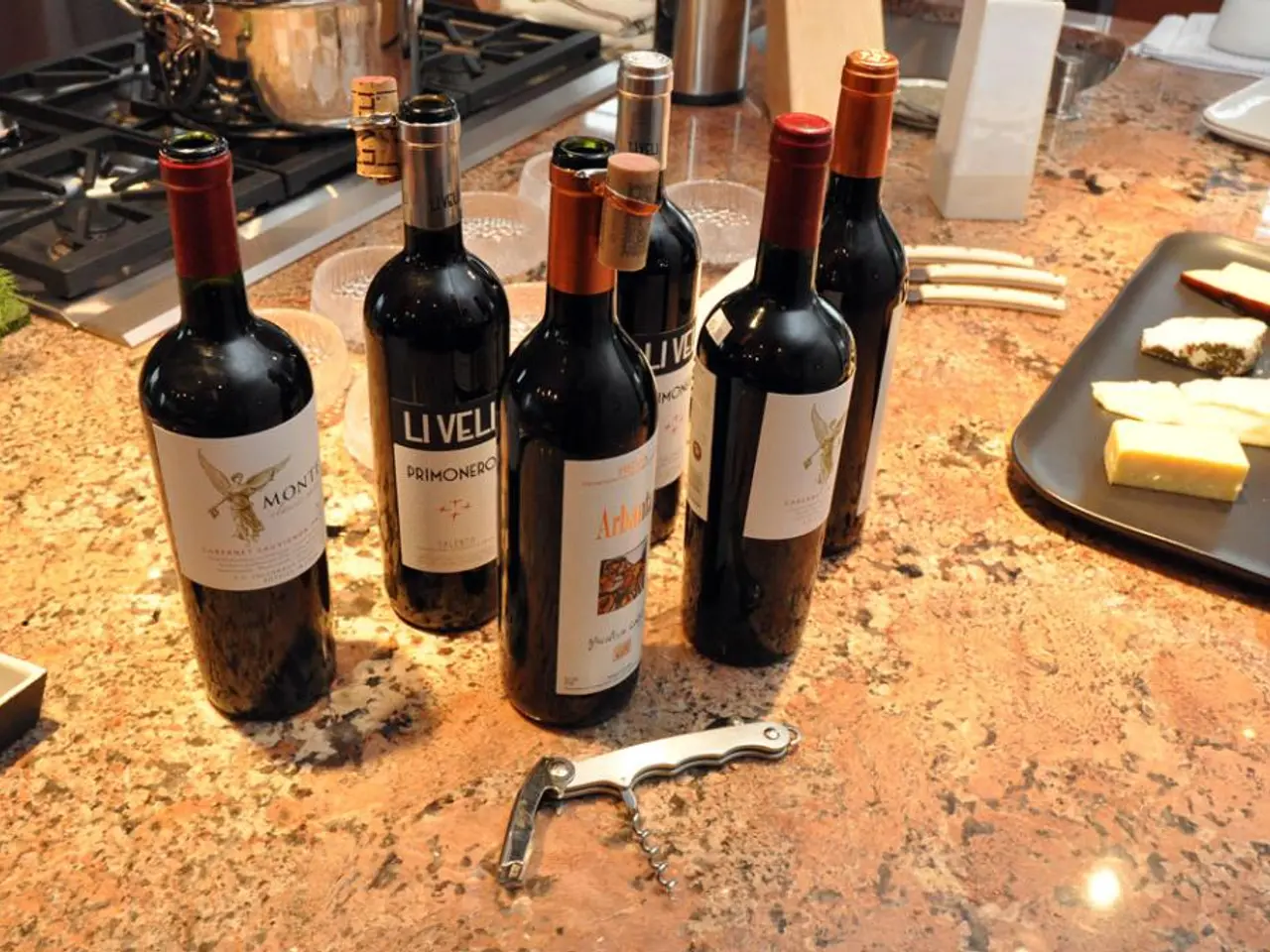Waterfall countertops explained, along with guidelines for selecting the perfect fit for your kitchen
Waterfall worktops, a striking island feature, extend the kitchen countertop material vertically at a 90-degree angle, creating a continuous, flowing look that enhances elegance and sophistication in contemporary kitchen designs[1][5]. This modern design element is becoming increasingly popular, particularly on kitchen islands.
Pros of Waterfall Worktops
One of the biggest advantages of waterfall kitchen islands is their sleek and modern aesthetic. They create a seamless, contemporary, and luxurious look with uninterrupted lines from countertop to floor, adding architectural interest[1][5].
Another benefit is the durability of waterfall edges. When made from materials like granite, they provide extra protection to the countertop sides, enhancing longevity by reducing vulnerable joints where dirt or moisture may accumulate[1].
The continuous surface integrates well with cabinetry, contributing to a polished finish with fewer seams or gaps[1]. Waterfall worktops are versatile and can be made from various materials such as granite, porcelain, quartzite, and concrete[2]. Porcelain waterfalls, in particular, are popular for ultra-thin profiles with excellent durability and UV resistance, ideal for both indoor and outdoor use.
Cons of Waterfall Worktops
Despite their advantages, waterfall worktops can come with certain drawbacks. The cost is one such downside, as waterfall islands require more material and precise installation compared to traditional worktops[1].
Some materials like concrete, while customizable, may develop hairline cracks and require regular sealing to prevent damage[3]. Similarly, natural stones like granite need periodic sealing for maintenance[4].
Because the waterfall edge involves a continuous vertical drop, it can be less forgiving in irregular layouts or small spaces, requiring precise measurements and design planning[3].
Tips for Choosing a Waterfall Worktop
When considering a waterfall worktop, it's essential to match the material to your lifestyle. For low maintenance, porcelain or quartz may be better; granite is durable but requires annual sealing[1][2][4]. Always view actual slabs before choosing to avoid surprises in natural veining or texture[4].
For maximum visual impact, coordinate waterfall edges with cabinetry and flooring colours and finishes to create a harmonious flow[5]. Balance design and function by using waterfall edges on islands or specific accent areas to highlight design features without overwhelming space or budget[3].
Considerations for Waterfall Worktops
Incorporating seating beneath a waterfall island accentuates its design, adds depth, and creates interesting contrasts of light and shadow. However, if seating space is included, reduced-depth cabinets or a bridging support is needed to ensure the stone is properly supported[1].
Understanding the full picture, including cost, practicalities, and the ideal kitchen worktop height, will help in making an informed decision about this standout feature. The cost of a waterfall worktop can range from £3,000 to £8,000, depending on the quartz product chosen[1].
Incorporating a waterfall worktop into your kitchen design can significantly increase the overall cost of a kitchen project due to the use of multiple quartz slabs. However, with careful planning and consideration, this modern design feature can enhance the aesthetic appeal and functionality of your kitchen, making it a worthwhile investment for many homeowners.
[1] Jonathan Stanley, VP of marketing at Caesarstone. [2] Molly Chandler, designer at Willis & Stone. [3] Structural support is crucial for quartz waterfall islands. [4] The ideal kitchen worktop height should be considered when choosing a waterfall worktop. [5] A waterfall worktop is a modern design feature commonly seen in kitchens, particularly on kitchen islands.
- To enhance the elegance and sophistication in contemporary kitchen designs, consider the modern design element of waterfall worktops with a striking island feature.
- The durable nature of waterfall edges, such as those made of granite, provides extra protection to the countertop sides, increasing the longevity of the material.
- Porcelain waterfalls, for instance, are popular for their ultra-thin profiles, excellent durability, and UV resistance, suitable for both indoor and outdoor use.
- The continuous surface of waterfall worktops complements cabinetry, contributing to a polished finish with fewer seams or gaps.
- Choosing a waterfall worktop requires matching the material to your lifestyle, with porcelain or quartz suitable for low maintenance, while granite may require annual sealing.
- For maximum visual impact, coordinating waterfall edges with cabinetry, flooring colors, and finishes can create a harmonious flow and subtle enhancing of design features.
- When including seating beneath a waterfall island, reduced-depth cabinets or a bridging support are necessary to ensure proper structural support.
- Understanding the cost implications, ranging from £3,000 to £8,000 for a quartz waterfall worktop, is essential for making an informed decision on this standout feature for a kitchen project.
- The aesthetics and functionality of a kitchen can be significantly improved by incorporating a waterfall worktop, making it a worthwhile investment for many homeowners.
- To optimize your lifestyle and design preferences, browse fashion-and-beauty, food-and-drink, and home-and-garden sections for inspiration and required materials while shopping for your waterfall worktop project.






